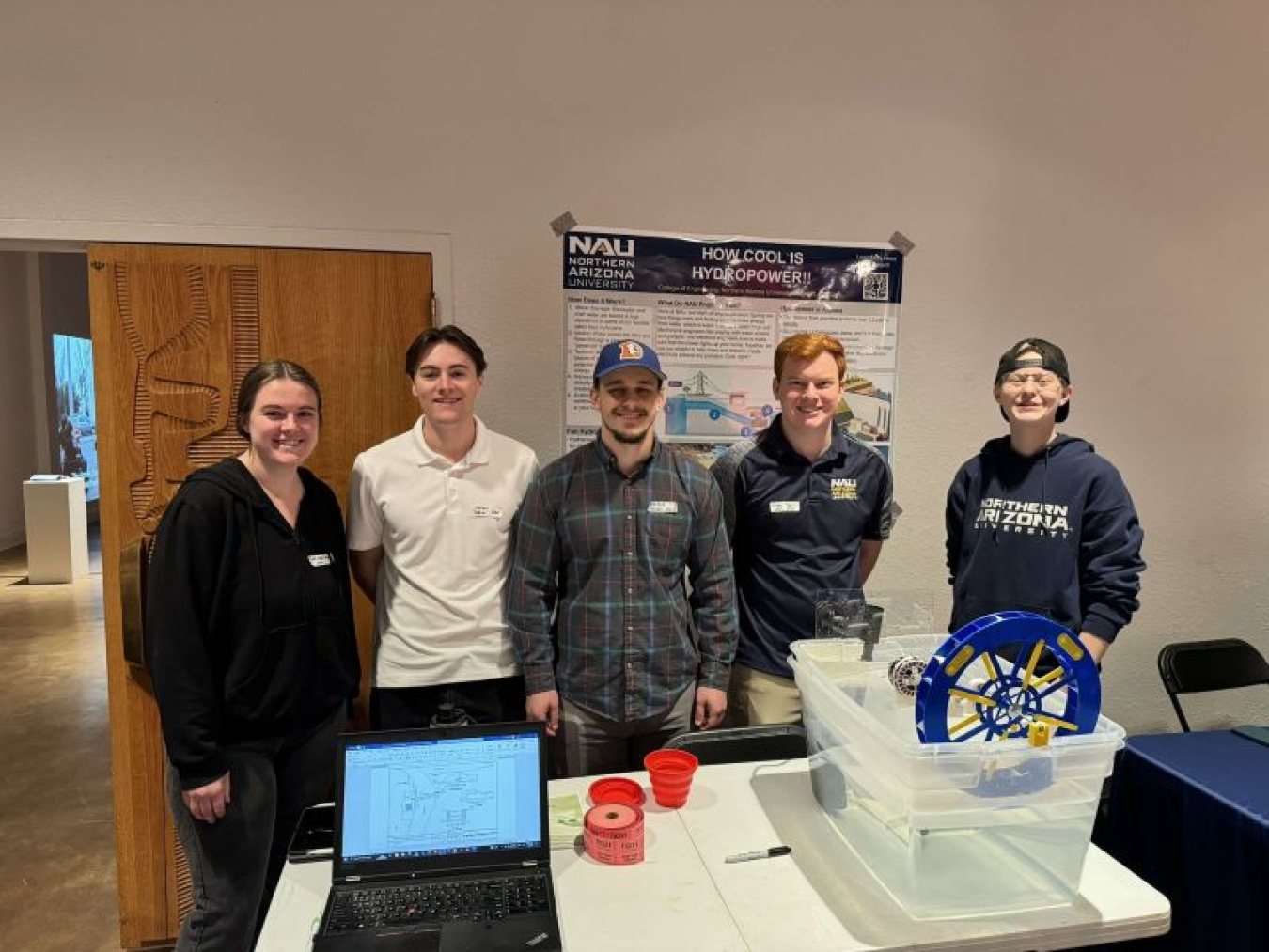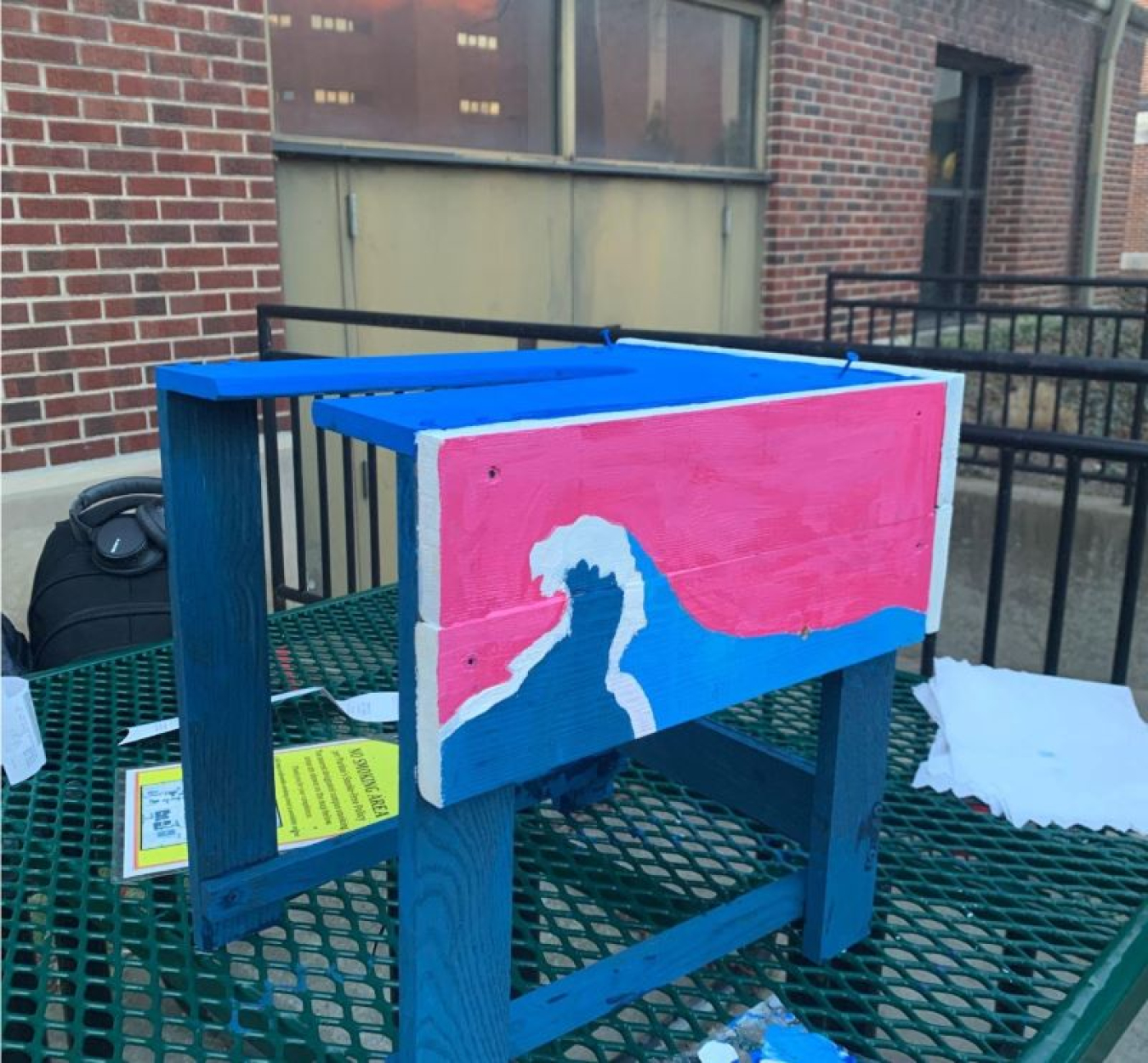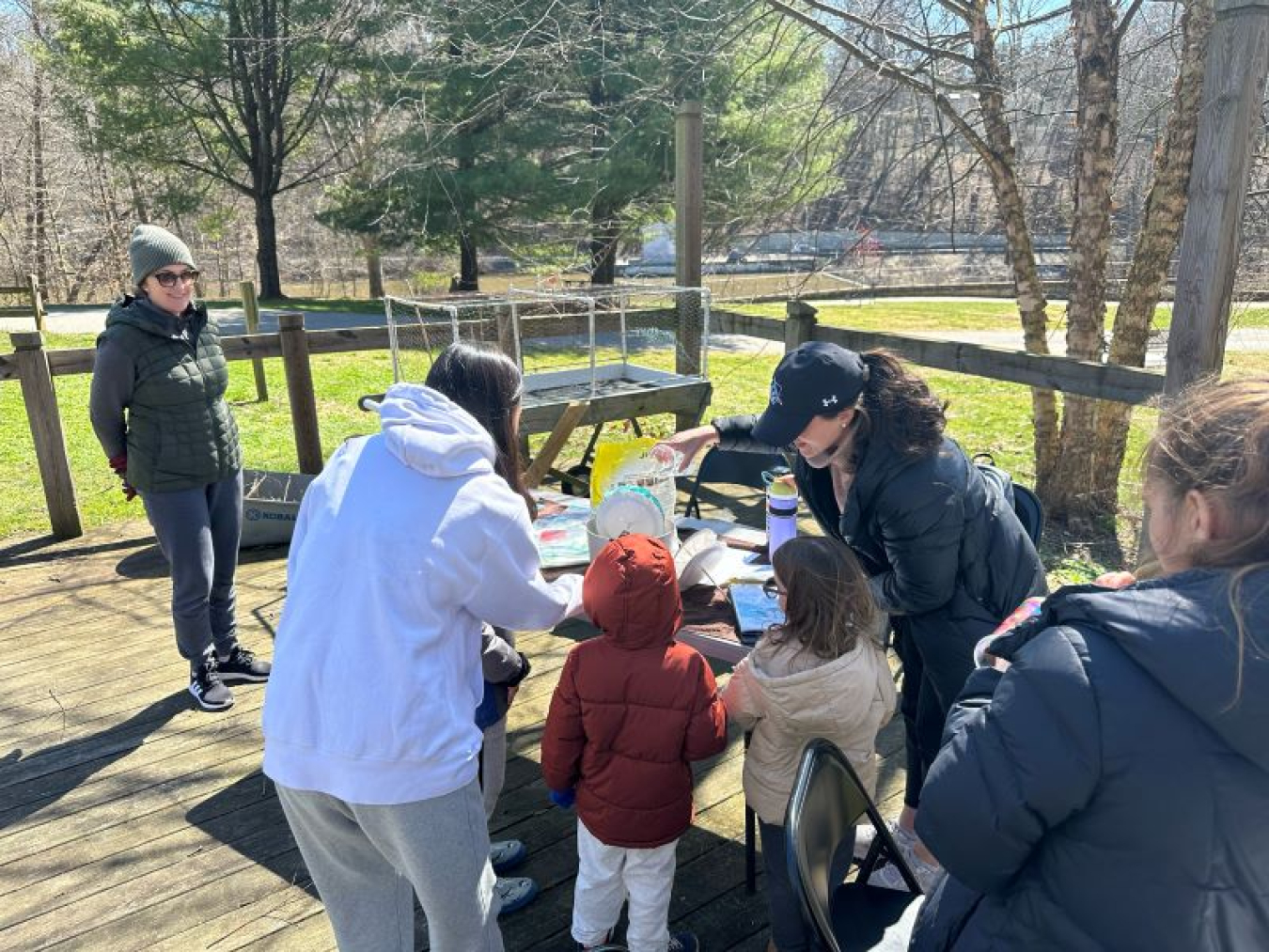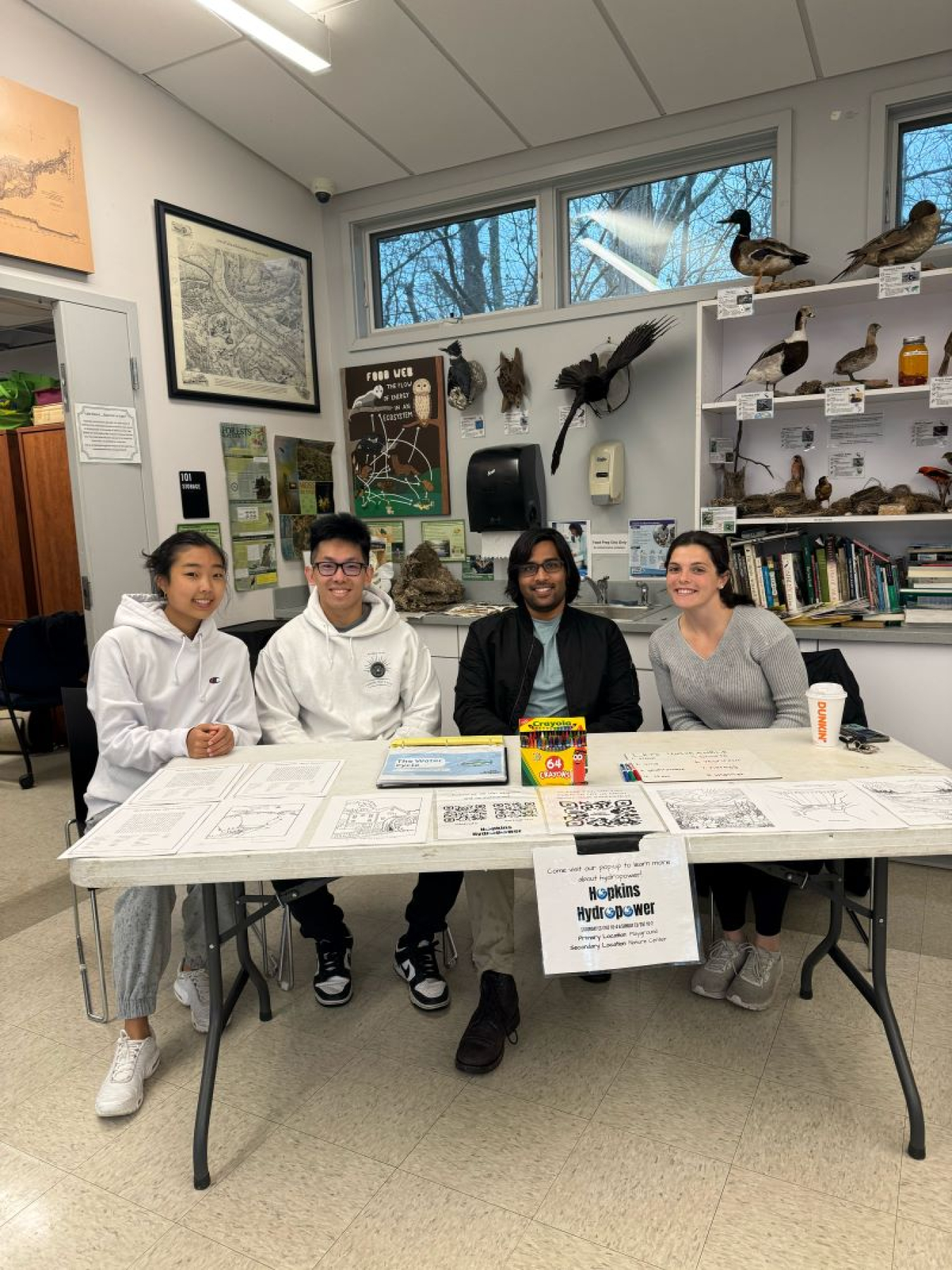Students from the Hydropower Collegiate Competition and Marine Energy Collegiate Competition winning teams discuss how they connected with students and local groups in their communities to inspire and encourage learning about water power and renewable energy.
Water Power Technologies Office
September 16, 2024The future of marine energy and hydropower is dependent on the availability of a skilled workforce. The domestic hydropower workforce will see a significant number of retirements in the coming decade, and the need to build a strong workforce pipeline has never been more critical. To be successful, and as the country transitions to a domestic and reliable clean energy economy, the industries need new, diverse talent to fill jobs across many different occupations, spur innovation, and support the evolving role of hydropower and marine energy in the U.S. electrical grid. Empowering students to teach others is one way to build the hydropower and marine energy workforce. Each year, the U.S. Department of Energy’s Water Power Technologies Office (WPTO) funds the Hydropower and Marine Energy Collegiate Competitions and as part of these competitions, student-led teams foster connections with their local communities.
“I really love the way this competition is set up for the students,” said Carson Pete, mechanical engineering assistant teaching professor at Northern Arizona University and the school’s 2024 Hydropower Collegiate Competition team advisor. “Not only do they learn the engineering side of things, but they also get to use some soft skills and really work with other students.”
In the 2024 Hydropower Collegiate Competition, teams from Northern Arizona University and Johns Hopkins University tied to win the Community Connections Challenge. Meanwhile, Purdue University won the challenge at the 2024 Marine Energy Collegiate Competition. Each team brought together students, educators, and local groups to create a community around water power education. Below, these collegiate teams discuss how they are teaching people in their communities about hydropower and marine energy.
Can you describe your Community Connections project?
Evan Higgins and Carson Pete, Northern Arizona University: Our Community Connections project started by asking, “When did we realize we wanted to become engineers?” This led us to focus on engaging with middle and high school students around hydropower. For us, it was important to be relatable role models—to be someone these middle and high schoolers could see themselves in. So, we interacted with students in the Flagstaff area to help ignite curiosity and provide educational insights into hydropower as a renewable energy career.

We visited the STAR School, which is an off-grid charter school that’s powered by solar and wind energy and serves students from pre-school through grade 8 who live in the Southwest corner of the Navajo Nation and the surrounding rural area. We also participated in a KidWind event for high schoolers that were designing wind turbines. We brought our hand-built stream table to those events to demonstrate hydropower technology and discuss the real-world applications and environmental benefits of hydropower.
Nikitha Sam and Abby Zahm, Purdue University: Our community Connections project focused on K-12 outreach, and we tailored our efforts for each age group. For example, our conversations with high schoolers centered on water power and clean energy career options so they can keep these in mind as they decide what path they’ll take when they get to college.
We also found that K-12 teachers simply didn’t have enough time to sift through the state curriculum, making it difficult to fit in lessons about water power or renewable energy. So, to help, we developed hands-on water power activities (like marine-powered boats and a water wheel activity) that teachers can easily incorporate into their curriculum at any point in the school year. Also, we made sure these kits used low-cost, accessible materials to make it easier for teachers to replicate these activities.
Jenna Halpin, Johns Hopkins University: Our Community Connections project aimed to make hydropower education more accessible in our community and beyond. We started by creating a five-module curriculum that teaches students about various aspects related to hydropower. These lesson plans are available online and can be tailored to meet the educational needs of students from kindergarten to 8th grade. We also created a website that featured photos, videos, and activities for students, including the free modules. We leveraged email and social media to engage with local public-school educators and parents.
Finally, we wanted to interact with our local Baltimore community. We partnered with Lake Roland Nature Reserve and hosted events over three weekends. During these events, we showed students how water wheels work to generate energy, taught our lesson plans, completed coloring pages—all with the goal to inspire kids to pursue STEM-related careers, specifically in the hydropower industry.
When connecting with students about water power, what seemed to inspire or interest them the most?
Evan and Carson: They seemed particularly inspired by seeing how water can actually generate electricity. The students were really engaged with the stream table, which gave them a chance to see water run through our 3D-printed water wheel and spin a generator. Additionally, relating hydropower to their everyday lives and local environments—which is a bit challenging given that we're in the drought state of Arizona—helped them connect the dots. When we shared information like how the Hoover Dam provides power for up to 1.3 million people, it gave them a relatable example.

Nikitha and Abby: Indiana is a landlocked state, so a lot of the kids have never seen the ocean or large bodies of water. So, when we brought the water wheel activity to students in an after-school program, the idea that water can produce energy was novel—they wanted to know more. The kids seemed motivated by hands-on learning and collaborative problem solving—when the wheel didn’t produce power, they kept trying until it did.
Jenna: The students were most inspired by the hands-on activity. We set up a water wheel created with common household items—like paper plates, egg cartons, and kabob skewers—and provided instructions and materials for students to take home and complete themselves. Some students were intimidated by the idea that running water translates into electricity, because it seemed like a complex topic. But that quickly changed when they poured the water themselves and physically watched how flowing water causes a wheel to spin. That spinning, or circular motion, lifted a small butterfly we had attached to the wheel and showed how potential energy is converted to mechanical energy. Normally, the wheel is connected to a generator to harness mechanical energy, but we wanted to show it visually through the butterfly.
What piece of your Community Connections efforts inspired you the most?
Evan and Carson: We were inspired by the students’ enthusiasm and the questions they asked. It was nice to talk to high schoolers who were actively trying to learn about our project and figure out where they could fit into this renewable energy world. Even just being around students and seeing how open they were to new ideas was inspiring. It was a good reminder of what it was like to be a kid and the crucial role that education plays in shaping a sustainable future. It was also inspiring to see the impact of our engagement—of 49 students, 35 of them wanted to learn more about hydropower and 30 of them thought a hydropower-related job could be fun.
Nikitha and Abby: Witnessing the younger students curiosity grow into a burning interest. It’s exciting to see them start with basic questions like, “What’s a water wheel?” that then led them to ask bigger questions around engineering and energy. It’s inspiring to be part of that “ah-ha” moment, which might stick with them for the rest of their lives and encourage them to pursue a career in renewable energy. We were also really inspired by simply talking about marine energy in a landlocked state because a lot of people don’t know that we can harness power from the ocean. So, it was cool to help spread awareness around this type of renewable energy.

Jenna: Hosting the events at Lake Roland allowed us to interact with our local youth community in an informal and educational way that was so inspiring. We talked to the students about their interests and shared what we learned through our research. It was super exciting to see these young students fully understand some of the concepts because it meant we successfully broke down complex hydropower-related topics into “bite-sized” pieces. Seeing their smiling faces as they left and hearing them talk about creating their own water wheels and doing more research about hydropower was so inspiring to us because we felt we truly impacted these students’ interests in STEM.
What role do you hope these students will play in water power’s future?
Evan and Carson: Whether they choose careers in engineering, renewable energy, or environmental policy (and whether it's a hydropower-related field or not), I hope they become innovators or leaders in the energy industry. Early exposure to hydropower could mean a lot of things for students—maybe it will serve as a foundation for career, but more than anything, hopefully they leverage this knowledge to drive advancements in technology and ensure that clean, renewable energy remains a key part of our global energy strategy.

Nikitha and Abby: We hope students keep in mind that there are so many types of experts needed within the marine energy industry. It’s more than science and engineering—we also need people thinking about the environment, ecology, policies, education, and outreach. And even if they aren’t directly working in water power, we hope they advocate for clean energy, clean water, and more sustainable practices.
Jenna: The students we interacted with are the future of water power. The current workforce will not be working forever, and it’s up to students (like the ones we engaged with) to embrace the many opportunities that exist in the hydropower industry. It is so important to inspire these students early on so that water power becomes an industry they dream of working in and they are inspired to pursue majors and internship opportunities related to water power when they begin their higher education.
What can we do now to make water power equitable and inclusive for current students, future water power professionals, and communities in general?
Evan and Carson: It starts with education and accessibility, which involves creating more educational opportunities that are accessible to a diverse range of students, including underrepresented communities, which is why engaging with the Navajo Nation was important to us. We need to ensure that there are pathways for students who want to pursue a career in water power. Beyond students, it’s important to involve communities in both the planning and the development stages of water power projects, so we can ensure that those initiatives meet both local needs and cultural values. Fostering those relationships between industry, governments, and education can really help make water power more inclusive and innovative.

Nikitha and Abby: Continue to build and spread awareness around the marine energy industry, the opportunities that exist within it, and the resources for learning about it. Knowledge sharing really starts with our teachers and educators, so it’s key for them to have digestible and engaging materials that can be integrated into their curriculum or after-school activities. It would also be great if those materials existed in a hub or database, where educators can easily access the materials and see all the resources available to them.
Jenna: First and foremost, increasing educational opportunities and awareness is essential to generating students’ interest in water power at a young age. Additionally, prioritizing and building awareness around a region’s energy infrastructure can help community members become more informed and engaged in energy-related decision-making processes. It’s important that current water power professionals also consider inclusive policies that advocate for equitable access to water power resources (and consider the social and environmental impacts of a project). These types of policies could foster greater buy-in from the community, secure a workforce, and attract prospective students who want to make an impact.
WPTO funds and the National Renewable Energy Laboratory (NREL) administers the Hydropower Collegiate Competition and the Marine Energy Collegiate Competition. The Hydropower Foundation also administers the HCC in partnership with NREL.
Learn more about science, technology, engineering, and mathematics (STEM) careers and workforce development opportunities on the Hydropower STEM Portal and Marine Energy STEM Portal. Subscribe to The SPLASH, NREL’s STEM newsletter.
Stay in the know with WPTO! Receive the latest information on funding opportunities, events, and other news by subscribing to the Hydro Headlines and Water Column newsletters, as well as the comprehensive Water Wire newsletter.

